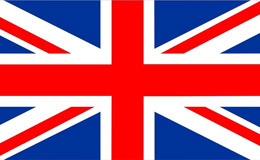Power Meter Din Rail
Key words:
● Real-time monitoring of voltage, current, power, electric energy, temperature, leakage current and other parameters ● With over voltage, under voltage, overload, short circuit, over current, ultra-moderate leakage and other protection functions ● Communication: RS485(Modbus-RTU), 4G ● With local manual lever, local electric control, local lock, remote control, timing control and other control functions ● optional buckle curve type C / D type. ● Guide rail type installation, optional pole number 2P / 4P ● Monitor residual current ● Neutral line can be switch off and protected ● The rated current it can monitor is 16A/32A/63A ● Installation: Din rail installed
● Real-time monitoring of voltage, current, power, electric energy, temperature, leakage current and other parameters ● With over voltage, under voltage, overload, short circuit, over current, ultra-moderate leakage and other protection functions ● Communication: RS485(Modbus-RTU), 4G ● With local manual lever, local electric control, local lock, remote control, timing control and other control functions ● optional buckle curve type C / D type. ● Guide rail type installation, optional pole number 2P / 4P ● Monitor residual current ● Neutral line can be switch off and protected ● The rated current it can monitor is 16A/32A/63A ● Installation: Din rail installed
● Real-time monitoring of voltage, current, power, electric energy, temperature, leakage current and other parameters ● With over voltage, under voltage, overload, short circuit, over current, ultra-moderate leakage and other protection functions ● Communication: RS485(Modbus-RTU), 4G ● With local manual lever, local electric control, local lock, remote control, timing control and other control functions ● optional buckle curve type C / D type. ● Guide rail type installation, optional pole number 2P / 4P ● Monitor residual current ● Neutral line can be switch off and protected ● The rated current it can monitor is 16A/32A/63A ● Installation: Din rail installed
● Real-time monitoring of voltage, current, power, electric energy, temperature, leakage current and other parameters ● With over voltage, under voltage, overload, short circuit, over current, ultra-moderate leakage and other protection functions ● Communication: RS485(Modbus-RTU), 4G ● With local manual lever, local electric control, local lock, remote control, timing control and other control functions ● optional buckle curve type C / D type. ● Guide rail type installation, optional pole number 2P / 4P ● Monitor residual current ● Neutral line can be switch off and protected ● The rated current it can monitor is 16A/32A/63A ● Installation: Din rail installed
Understanding Din Rail Power Meters: Essential Tools for Electrical Measurement
Din Rail power meters are essential devices used for monitoring and measuring electrical parameters in various applications. These compact instruments are designed to be mounted on standard DIN rails, making them an ideal choice for industrial and commercial electrical panels. Their main function is to measure voltage, current, power, energy consumption, and even power quality parameters, offering
Key words:
Understanding the Wiring Requirements for Din Rail Kwh Meters: A Comprehensive Guide
Understanding the Wiring Requirements for Din Rail Kwh Meters Table of Contents 1. Introduction to Din Rail Kwh Meters 2. Importance of Wiring Requirements 3. Types of Din Rail Kwh Meters 4. Basic Wiring Diagram for Din Rail Kwh Meters 5. Essential Wiring Materials and Tools 6. Step-by-Step Installation Guide 7. Safety Precautions During Installation 8. Common Issu
Key words:
Understanding Din Rail Power Meters: Essential Tools for Electrical Monitoring
Din Rail Power Meters are essential instruments used in the electrical and energy sectors for measuring various electrical parameters. These devices are typically mounted on standard DIN rails, which are a common feature in electrical enclosures. One of the primary functions of a Din Rail Power Meter is to monitor the energy consumption of different electrical circuits, allowing for effective mana
Key words:
The Environmental Benefits of Using Din Rail Kwh Meters
The Environmental Benefits of Using Din Rail Kwh Meters Table of Contents Introduction to Din Rail KWh Meters Understanding Din Rail KWh Meters Energy Efficiency and Cost Savings Reducing Your Carbon Footprint Integration with Renewable Energy Sources Enhancing Grid Management Applications of Din Rail KWh Meters Frequently Asked Questions (FAQs) Conclusion Int
Key words:
Understanding Din Rail Power Meters: Essential Insights for Electrical Professionals
In the realm of electrical engineering, monitoring energy consumption effectively is crucial for both efficiency and cost management. Din Rail Power Meters have emerged as essential instruments for professionals seeking to optimize electrical systems. These devices are designed to be mounted on a standard DIN rail, which is commonly used in electrical panels, facilitating easy installation and int
Key words:
Enhancing Safety with Proper Installation of Din Rail Kwh Meters: A Comprehensive Guide
Enhancing Safety with Proper Installation of Din Rail Kwh Meters Table of Contents 1. Introduction to Din Rail Kwh Meters 2. The Importance of Proper Installation 3. Understanding Din Rail Kwh Meters 3.1 What is a Din Rail Kwh Meter? 3.2 How Do Din Rail Kwh Meters Work? 4. Safety Standards and Regulations 4.1 International Standards 4.2 Local Electrical Codes 5. Best Practices for Installation 5.1
Key words:
Product
News


![[object Object] [object Object]](https://omo-oss-image.thefastimg.com/portal-saas/new2023080419495759710/cms/image/138ba837-b50d-4ff3-a73c-2e6a2379c522.jpg)








